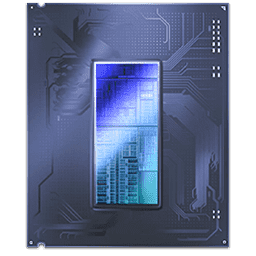Intel Core Ultra Arrow Lake Preview
Source: Tech Power Up added 10th Oct 2024Introduction
Intel today announced the Core Ultra 2-series Arrow Lake-S desktop processor family. This marks the first true next-generation of desktop processors for the company since its 13th Gen Core Raptor Lake. With Arrow Lake, Intel aims to bring many of the technological innovations it debuted with the Core Ultra 1-series Meteor Lake on the mobile platform, including on-chip AI acceleration, a completely new set of CPU cores, generational power and thermal improvements, and new platform I/O. The Core Ultra 2-series Arrow Lake-S also debuts a new desktop platform, and a new socket—LGA1851, so you’ll need a new motherboard. Intel is also debuting the new 800-series desktop chipset, led by Z890, today.
Today’s launch of the Core Ultra 2-series follows a similar processor generation rollout strategy as past generations, with Q3-2024 seeing launches and availability of the unlocked K or KF SKUs targeting PC enthusiasts and gamers, alongside the top Z890 chipset that supports processor overclocking, with an expected 2025 ramp of the rest of the series, with more affordable SKUs, and other chipsets in the 800-series.
Intel’s goal with Arrow Lake isn’t just to introduce new technology across the board—the CPU cores, NPU, and I/O, but also address the weakest aspect of the preceding processor generations by Intel going all the way back to the 10th Gen Core Comet Lake—power draw. Since its switch to TSMC and 7 nm with the Ryzen 3000 Zen 2, AMD has consistently stayed ahead of Intel in energy efficiency, as Intel had to drag on 14 nm for two more generations (Comet Lake and Rocket Lake), and by the time its 10 nm process (later rebranded Intel 7) arrived, AMD had already developed the efficient Zen 3 on 7 nm, and was preparing to transition to 5 nm and Zen 4. Ryzen is now on 4 nm with Zen 5. Intel held onto its own Intel 4 node (7 nm) with the compute tile of Meteor Lake, but decided on TSMC for Ultra 2-series. Arrow Lake is the first high-performance client Intel architecture to use TSMC for the CPU cores, with its Compute tile being built on TSMC 3 nm—a more advanced node than the 4 nm that Zen 5 uses.
The design philosophy with Arrow Lake hence is to reestablish Intel as a leader in efficient client desktop processors. This goal would be achieved even if the generational performance or IPC gains are modest, as long as there is a significant drop in power draw, because then it opens up other possibilities for users, such as overclocking—something Intel processors tend to be naturally good at.
In this article, we preview what’s in store for you when the Core Ultra 2-series Arrow Lake desktop processor family hits the shelves later this month.
media: Tech Power Up
Related posts
Notice: Undefined variable: all_related in /var/www/vhosts/rondea.com/httpdocs/wp-content/themes/rondea-2-0/single-article.php on line 88
Notice: Undefined variable: all_related in /var/www/vhosts/rondea.com/httpdocs/wp-content/themes/rondea-2-0/single-article.php on line 88
Related Products
Notice: Undefined variable: all_related in /var/www/vhosts/rondea.com/httpdocs/wp-content/themes/rondea-2-0/single-article.php on line 91
Warning: Invalid argument supplied for foreach() in /var/www/vhosts/rondea.com/httpdocs/wp-content/themes/rondea-2-0/single-article.php on line 91
